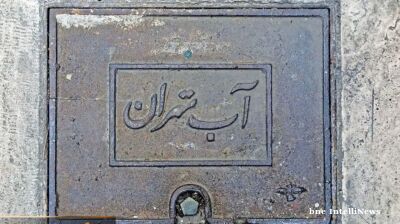Europe’s nuclear power sector is starting to worry about its fuel stocks as Russia’s invasion of Ukraine is calling into question the security of uranium supplies and processing services provided by Russia.
The issue has the potential to turn into a fuel crisis with parallels to the current gas crisis, with countries now needing to look for alternatives and the Kremlin using both raw uranium 235 and finished fuel to apply political and economic pressure.
Fuel cycle
Russia may only supply 6% of the global raw uranium market, but it controls 40% of the conversion market – where uranium oxide, or yellowcake, is converted into uranium hexafluoride – and 46% of the enrichment market, where the U-235 content in raised to 3-5%, allowing nuclear fuel to be formed.
Also, Russia is prominent is many stages of the global nuclear fuel cycle through various state-owned companies grouped under the Rosatom umbrella.
What this means is that Russia has the capability in several segments of the nuclear value chain to make a particular service or material scarce or difficult to source. This would make many reactors, especially in Central and Eastern Europe but also in Western Europe and the US, vulnerable to supply problems that could take reactors offline.
The Centre on Global Energy Policy at Columbia University said in a recent paper that countries such as Finland, the Czech Republic, Turkey and Ukraine have Russian reactors in operation or under construction. They are at risk of operational difficulties or even outages without materials, equipment and services to maintain them.
Even the US relies on Russia for 16% of its uranium, with another 30% from Russian allies Kazakhstan and Uzbekistan.
However, all is not lost, as in various segments of the value chain, from uranium mining and milling, conversion, enrichment and fuel fabrication, various Western manufacturing companies can over time start producing replacements to overcome that supply challenge.
For example, Westinghouse already has a joint venture with Kazatomprom to provide fuel that can be used in Russian-designed VVER reactors.
European reactors
Russia is a major supplier of processed nuclear fuel to Russian-built reactors across Central and Eastern Europe and holds direct supply contracts with utilities and plant operators.
Indeed, 18 out of 103 reactors in the EU, or 10% of EU nuclear capacity, use Russian fuel under contract with TVEL. These are in Bulgaria, Czech Republic, Hungary, Slovakia and Finland
TVEL operates worldwide, supplying nuclear fuel to 73 VVER reactors inside Russia and in other countries, including Ukraine, Belarus, Armenia, China, India and Iran, making up around 16% of the world market in 2020.
Many of the countries that import processed fuel from Russia are now reconsidering, with CEZ, the Czech state-owned electric utility, recently announcing it would obtain its fuel supplies for its Temelin nuclear power plant (NPP) from Westinghouse and Framatome from 2024.
Slovakia has secured enough nuclear fuel from TVEL for the next year and has a contract with TVEL for four more years, according to Euractiv, but the economy ministry has also began negotiations with Westinghouse, though it does not currently produce the fuel needed by Slovak nuclear power plants and it would also be more expensive.
Hungary, however, remains committed to its nuclear ties to Russia. The expansion of the Paks NPP, involving two 1,200-MW VVER units, is due to be completed by Russian companies by 2030. They will use Russian nuclear fuel supplied by TVEL.
Likewise Bulgaria, which has 2,000 MW of capacity at Kozlodui, receives all its nuclear fuel from Russia’s TVEL via its trading unit Techsnabexport.
In Ukraine, Energoatom decided after Russia’s invasion to stop using any more Russian nuclear fuel once stockpiles are used up in 2024, and will instead use Western fuel supplied by Westinghouse.
The International Energy Agency (IEA) noted in its recent nuclear report.that one impact of the war could be that heightened energy security concerns could bolster the case for nuclear energy in some countries as they seek to reduce reliance on expensive and volatile fossil fuels and accelerate transitions.
However, it could also have negative impacts. Aside from the effects on public opinion of active conflict in the vicinity of Ukraine’s nuclear facilities, the conflict raises questions about Russia’s future as a producer and exporter of nuclear fuel supplies.
Market share
Russia plays an even more significant role in the production of uranium fuel, accounting for 38% of uranium processing (conversion) worldwide and over 45% of fuel enrichment capacity in 2020.
Much of the uranium processed and enriched by Russia is sourced from Kazakhstan, which was responsible for 41% of global uranium production in 2020.
Indeed, Kazakhstan is by far the largest producer of uranium, mining 21,810 tonnes in 2021, according to the World Nuclear Association. Next comes Namibia with 5,743 tonnes, Canada with 4,692 tonnes and Australia with 4,192 tonnes. Uzbekistan follows with 3,500 tonnes, then Russia with 2,635 tonnes and Niger with 2,248 tonnes. This means that about 75% of uranium comes from Kazakhstan, Canada and Australia.
On the other hand, Russia is one of a number of suppliers of raw uranium to Europe, accounting for 20.2% of the market, just behind Niger with 20.3%. Canada, Australia and Kazakhstan are not far behind.
Within Europe, different countries have varying exposure to Russia. Some countries, such as Finland, source raw uranium from such countries as Canada, Australia and Africa, before sending it to TVEL in Russia for enrichment and processing.
France, by contrast, sources 9,700 tonnes of uranium oxide concentrate (8,200 tonnes of uranium) per year from Canada and Niger, before enriching and processing it in France.
Meanwhile, Euratom, which monitors European uranium trade, estimates that Russian companies provided about 24% of uranium conversion services and 25% of enrichment services to EU utilities in 2020.
France’s Orano supplies the majority of enrichment services and the largest share of conversion services to those utilities, while Canada and the US are also significant suppliers of conversion services to them.
Indeed, World Nuclear Association figures show that Russia provided 25mn SWU per year of enrichment capacity, against a global total of 69mn SWU, making it the biggest enricher, following by China, France, the US, the UK, Germany and the Netherlands.

Slow market
The IEA pointed out that the global uranium market is slow moving. Nuclear power plants (NPPs) need to refuel infrequently, reducing exposure to short-term disruptions, and fuel can be stored for a few years before being used.
Nuclear power is set to hold its own in the world in the coming 30 years. While capacity is forecast by the IEA to double between 2020 and 2050 from 413 GW to 812 GW, its share of global output would actually dip slightly to 8% as total global consumption rises.
What this means is that Russia has the capability to exploit the nature of the global nuclear market to use nuclear fuel to apply pressure across the value chain.
On the other hand, in many areas, from uranium supply to enrichment technology, other operators in other countries are available. Nuclear companies can change suppliers if forced by pressure from Russia, however economically painful or technically difficult it may be.
Yet the most exposed remain the Central European countries, whose Russian rectors are an inheritance from the days of the USSR and COMECON economic links. Ukraine and the Czech Republic have already sought alternatives supplied by Westinghouse, but others such as Hungary appear happy to maintain close Russian links.
bneGREEN

EXPLAINER: What is the EU’s CBAM and how will it affect global trade from 2026?
The European Union’s Carbon Border Adjustment Mechanism (CBAM) will enter its full operational phase on January 1, 2026, marking a major shift in global climate and trade policy.

Iran faces critical water crisis after driest year in five decades
Iran faces critical water crisis after driest year in five decades with 40% nationwide rainfall drop.

Global renewables to double by 2030, but IEA warns momentum must accelerate
Global renewable energy capacity is on course to double by 2030, reaching 4,600 GW—comparable to the current combined total of China, the European Union and Japan—according to the International Energy Agency’s Renewables 2025 report.

South Korea’s embrace of SMRs as a pillar of nuclear policy
Spearheaded by Korea Hydro & Nuclear Power, these compact reactors are increasingly being seen as central to the nation's energy policy, offering flexibility, scalability, and ultimately a pathway to carbon neutrality


